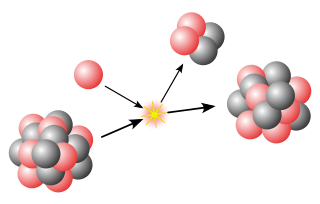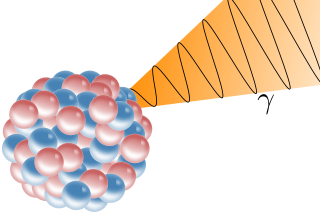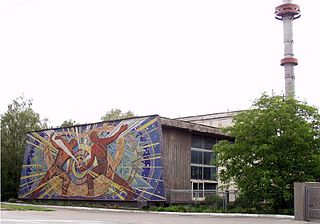This article has multiple issues. Please help improve it or discuss these issues on the talk page . (Learn how and when to remove these template messages)
|
Institute of Radiation Problems is a part of the Azerbaijan National Academy of Sciences.
This article has multiple issues. Please help improve it or discuss these issues on the talk page . (Learn how and when to remove these template messages)
|
Institute of Radiation Problems is a part of the Azerbaijan National Academy of Sciences.
The Radiation Research Sector of the Academy of Sciences of Azerbaijan (ANAS) has been established by the decision №27 of the State Scientific and Technical Committee under the Council of Ministers of the USSR, dated May 21, 1969 for the purpose of developing scientific and scientific-technical bases of peaceful use of nuclear energy, impact of various ionizing rays on substances, environment, creatures, physical and chemical problems of energy conversion, radioecology and radiation safety in Azerbaijan.
After Azerbaijan Republic gained its sovereignty, problems of radiation and nuclear safety, radioecology and peaceful use of nuclear energy have become more actual issue. Therefore, the Institute of Radiation Problems has been established on the basis of the Radiation Research Sector of ANAS by the decision №27 of the Cabinet of Ministers of the Azerbaijan Republic, dated May 21, 2002.
Institute of Radiation Problems is the only scientific institution in ANAS system that conducts fundamental scientific and technical researches in the field of peaceful use of nuclear energy, radiation safety, radioecology, physical and technical problems of power engineering, non-conventional energy conversion processes, radiation effects in solids, radiation material sciences and carries out domestic and international information exchange.

The following outline is provided as an overview of and topical guide to chemistry:
Physical science is a branch of natural science that studies non-living systems, in contrast to life science. It in turn has many branches, each referred to as a "physical science", together called the "physical sciences".
The following outline is provided as an overview of and topical guide to physics:

In physics, radiation is the emission or transmission of energy in the form of waves or particles through space or through a material medium. This includes:
Medical physics is, in general, the application of physics concepts, theories, and methods to medicine and healthcare. Medical physics departments may be found in institutions such as universities, hospitals, and laboratories.
Radiation protection, also known as radiological protection, is defined by the International Atomic Energy Agency (IAEA) as "The protection of people from harmful effects of exposure to ionizing radiation, and the means for achieving this". Exposure can be from a source of radiation external to the human body or due to internal irradiation caused by the ingestion of radioactive contamination.

A synchrotron light source is a source of electromagnetic radiation (EM) usually produced by a storage ring, for scientific and technical purposes. First observed in synchrotrons, synchrotron light is now produced by storage rings and other specialized particle accelerators, typically accelerating electrons. Once the high-energy electron beam has been generated, it is directed into auxiliary components such as bending magnets and insertion devices in storage rings and free electron lasers. These supply the strong magnetic fields perpendicular to the beam which are needed to convert high energy electrons into photons.
Contamination is the presence of a constituent, impurity, or some other undesirable element that spoils, corrupts, infects, makes unfit, or makes inferior a material, physical body, natural environment, workplace, etc.

The Bhabha Atomic Research Centre (BARC) formerly known as Atomic Energy Establishment, Trombay is India's premier nuclear research facility, headquartered in Trombay, Mumbai, Maharashtra. Founded by Homi Jehangir Bhabha Atomic Energy Establishment, Trombay (AEET) in January 1954 as a multidisciplinary research program essential for the india's nuclear program. It operates under the Department of Atomic Energy(DAE) which is directly overseen by the Prime Minister of India. In 1966 after the death of Homi Jehangir Bhabha AEET renamed as Bhabha Atomic Research Centre (BARC) BARC is a multi-disciplinary research centre with extensive infrastructure for advanced research and development covering the entire spectrum of nuclear science, chemical engineering, material sciences & metallurgy, electronic instrumentation, biology and medicine, supercomputing, high-energy physics and Plasma physics and associated research for Indian nuclear programme and related areas.

Nuclear astrophysics is an interdisciplinary part of both nuclear physics and astrophysics, involving close collaboration among researchers in various subfields of each of these fields. This includes, notably, nuclear reactions and their rates as they occur in cosmic environments, and modeling of astrophysical objects where these nuclear reactions may occur, but also considerations of cosmic evolution of isotopic and elemental composition (often called chemical evolution). Constraints from observations involve multiple messengers, all across the electromagnetic spectrum (nuclear gamma-rays, X-rays, optical, and radio/sub-mm astronomy), as well as isotopic measurements of solar-system materials such as meteorites and their stardust inclusions, cosmic rays, material deposits on Earth and Moon). Nuclear physics experiments address stability (i.e., lifetimes and masses) for atomic nuclei well beyond the regime of stable nuclides into the realm of radioactive/unstable nuclei, almost to the limits of bound nuclei (the drip lines), and under high density (up to neutron star matter) and high temperature (plasma temperatures up to 109 K). Theories and simulations are essential parts herein, as cosmic nuclear reaction environments cannot be realized, but at best partially approximated by experiments. In general terms, nuclear astrophysics aims to understand the origin of the chemical elements and isotopes, and the role of nuclear energy generation, in cosmic sources such as stars, supernovae, novae, and violent binary-star interactions.

Radioecology is the branch of ecology concerning the presence of radioactivity in Earth’s ecosystems. Investigations in radioecology include field sampling, experimental field and laboratory procedures, and the development of environmentally predictive simulation models in an attempt to understand the migration methods of radioactive material throughout the environment.
In radiobiology, the relative biological effectiveness is the ratio of biological effectiveness of one type of ionizing radiation relative to another, given the same amount of absorbed energy. The RBE is an empirical value that varies depending on the type of ionizing radiation, the energies involved, the biological effects being considered such as cell death, and the oxygen tension of the tissues or so-called oxygen effect.

A gamma ray, also known as gamma radiation, is a penetrating form of electromagnetic radiation arising from the radioactive decay of atomic nuclei. It consists of the shortest wavelength electromagnetic waves and so imparts the highest photon energy. Paul Villard, a French chemist and physicist, discovered gamma radiation in 1900 while studying radiation emitted by radium. In 1903, Ernest Rutherford named this radiation gamma rays based on their relatively strong penetration of matter; in 1900 he had already named two less penetrating types of decay radiation alpha rays and beta rays in ascending order of penetrating power.
Nuclear law is the law related to the peaceful uses of nuclear science and technology.

Ulmas Mirsaidovich Mirsaidov is a Tajik theoretical chemist. He is the Mirsaidov Ulmas Mirsaidovich Professor of Chemistry. He is Director of Nuclear and Radiation Safety Agency under AS RT.

Institute for Nuclear Research of the National Academy of Sciences of Ukraine (KINR) located in Kyiv, Ukraine. The Institute publishes journal Nuclear Physics and Atomic Energy.
Ogtay Abiloglu Samadov or Samedov is an Azerbaijani nuclear physicist who since 2015 has been director of the Institute of Radiation Problems of Azerbaijan National Academy of Sciences.

The Philippine Nuclear Research Institute (PNRI) is a government agency under the Department of Science and Technology mandated to undertake research and development activities in the peaceful uses of nuclear energy, institute regulations on the said uses, and carry out the enforcement of said regulations to protect the health and safety of radiation workers and the general public.
Nuclear Physics and Atomic Energy is a quarterly peer-reviewed open-access scientific journal published by Institute for Nuclear Research of the National Academy of Sciences of Ukraine. It was established in 2000 and covers all aspects of nuclear physics, particle physics, atomic energy, radiation physics, plasma physics, radiobiology, radioecology, technique and experimental methods. The editor-in-chief is V.I. Slisenko. Articles are published in English, Ukrainian or Russian with titles and abstracts in all three languages.

Igor Serafimovich Tashlykov was a USSR and Belarusian physicist, Doctor of Physical and Mathematical Sciences (1989), Professor (1992), member of the New York Academy of Sciences (1994), and Belarusian Physical Society (1995). Places of work, positions: Research Institute of Applied Physical Problems (APP) of the Belarusian State University, Belarusian State Technological University, Maxim Tank Belarusian State Pedagogical University (BSPU).